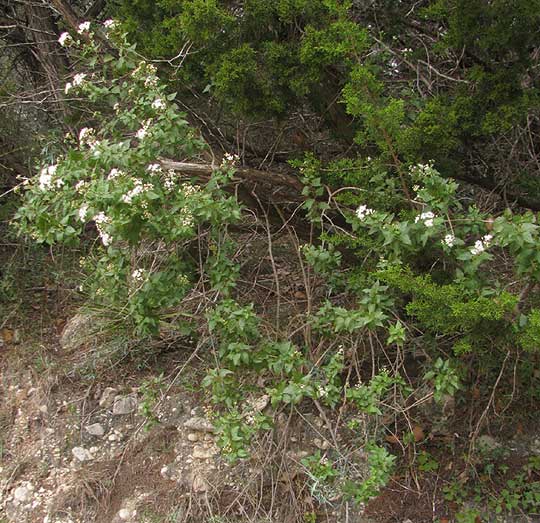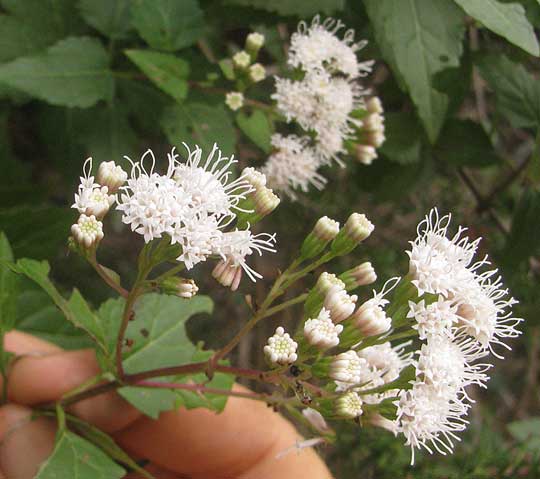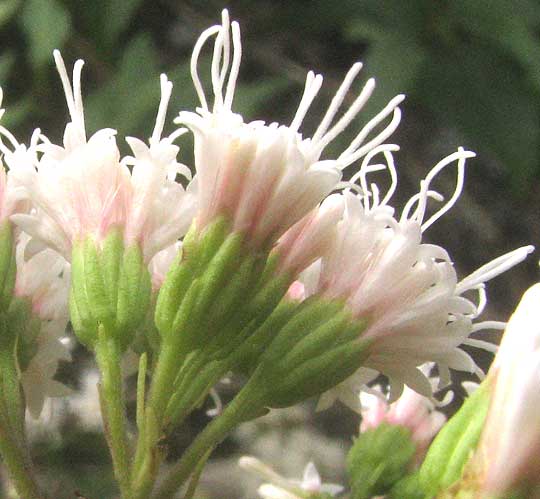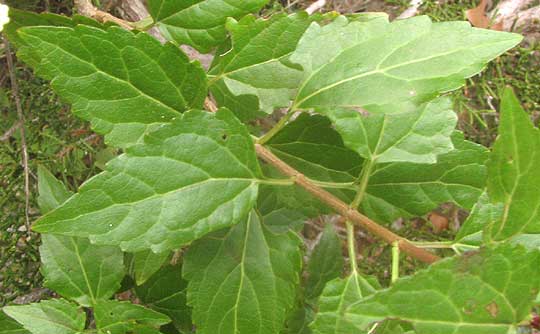Excerpts from Jim Conrad's
Naturalist Newsletter
from the November 3, 2013 Newsletter issued from the Frio Canyon Nature Education Center in the valley of the Dry Frio River in northern Uvalde County, southwestern Texas, on the southern border of the Edwards Plateau; elevation ~1750m (~5750 ft); N29.62°, W99.86°; USA
WHITE MISTFLOWER
The road edged up to a rocky cliff on which a much branched, shoulder high, somewhat sprawling and leggy looking shrub was loaded with clusters of white, eupatorium-type flowers, as shown below:

Up close, the composite-type flowering heads consisted only of cylindrical disc flowers, with no petal-like ray flowers radiating from the heads' "eyes," also very eupatorium-like, as shown below:

A side view of the pretty flowers with their style arms snaking out of the white but faintly pinkish corollas is shown below:

The shrub's opposite leaves, also looking eupatorium-like, appear below:

In the old days this pretty plant was indeed regarded as a member of the Composite or Sunflower Family's genus Eupatorium, but some years back somebody broke up that ±800-species-large, easily recognizable and worthy genus into a passel of wishy-washy genera with forgettable names like Flyriella and Hebeclinium, and our plant was kicked to one such genus.
Our rocky-cliff plant goes by several common names, including White Mistflower, White Shrub Mistflower, Shrubby Boneset and Havana Snakeroot. It's AGERATINA HAVANENSIS, and it has all those common names and others because it's so pretty and appropriate for arid-land gardens that it's sold in nurseries for that purpose. It's native to arid northern Mexico, Cuba, Hispaniola and Bermuda, and, curiously, in the US, a handful of counties in southwestern and central Texas. It's described as occupying limestone outcrops and slopes, ledges along streams, and often in oak-juniper woodlands, which is exactly where we found it.
This is a magnificent plant and I'm glad certain nurseries are providing it to the general public.